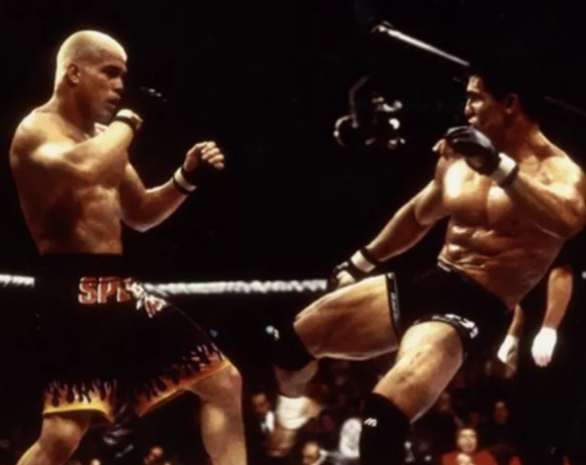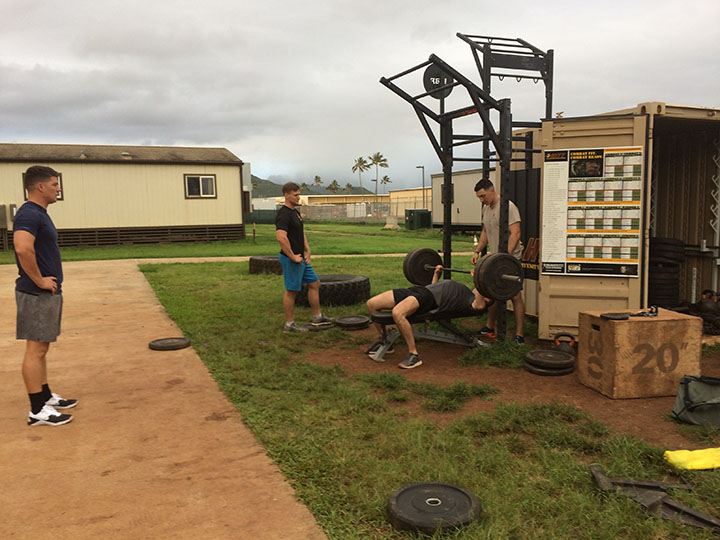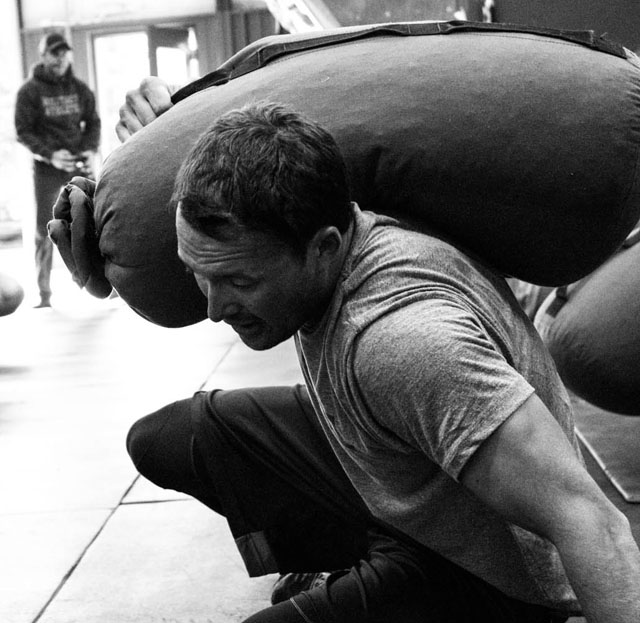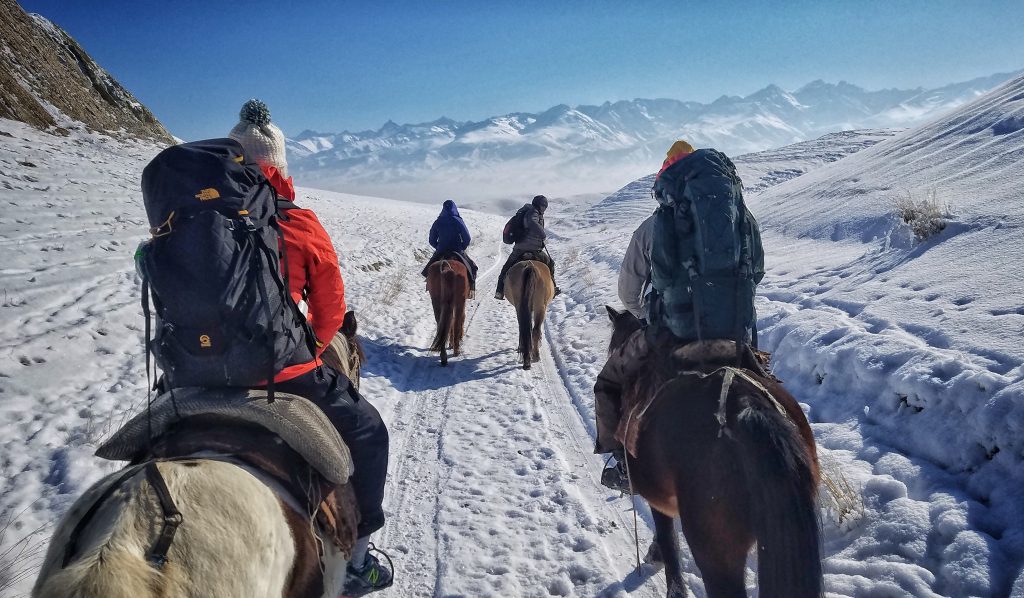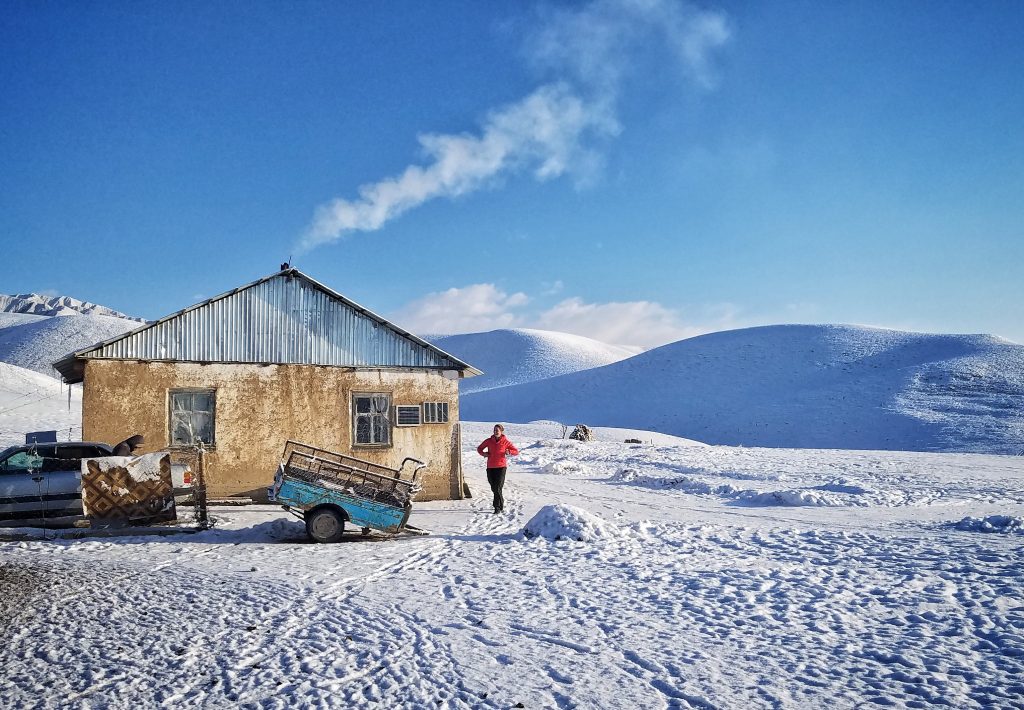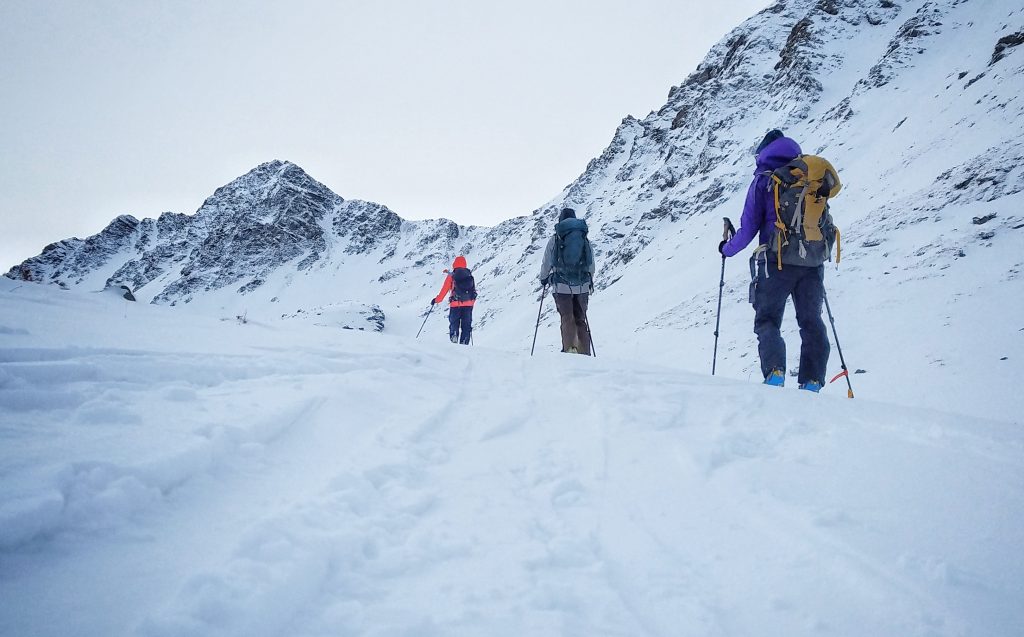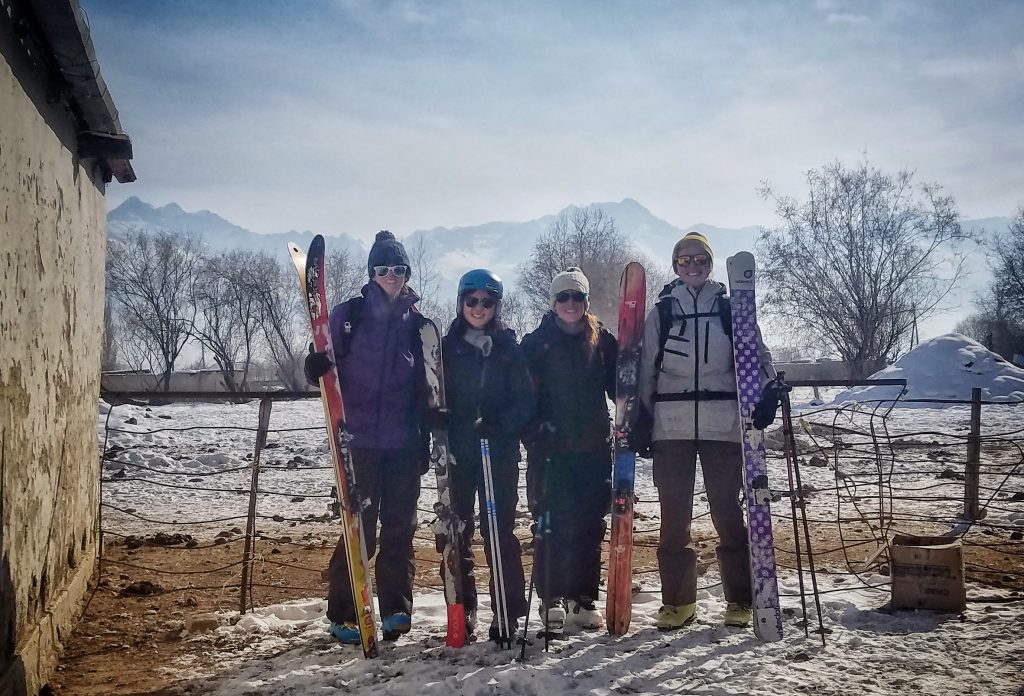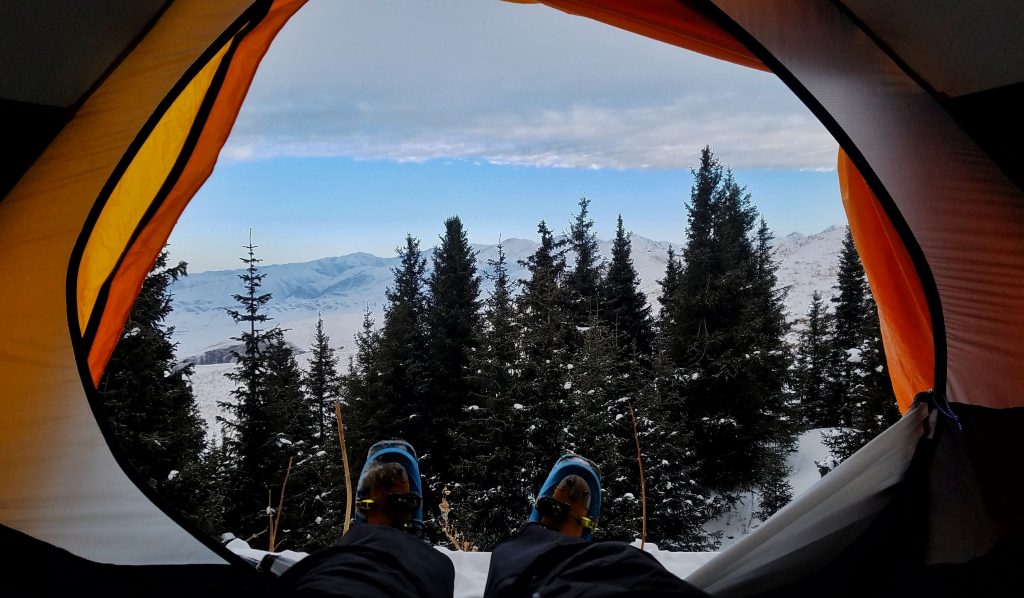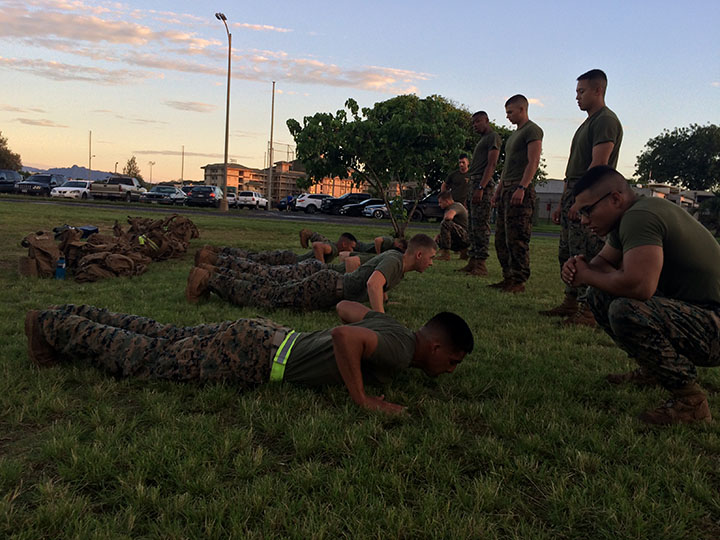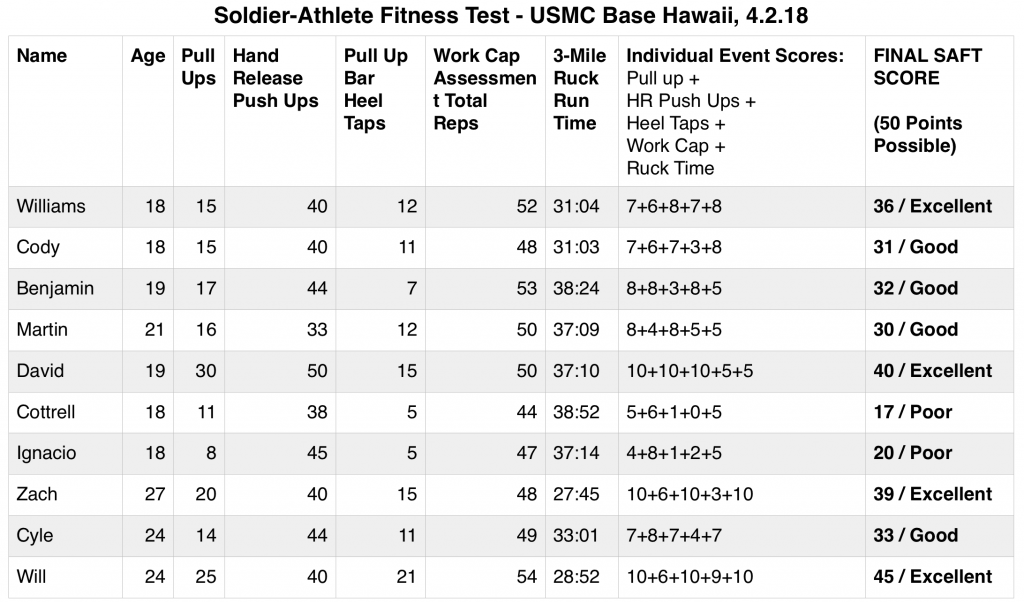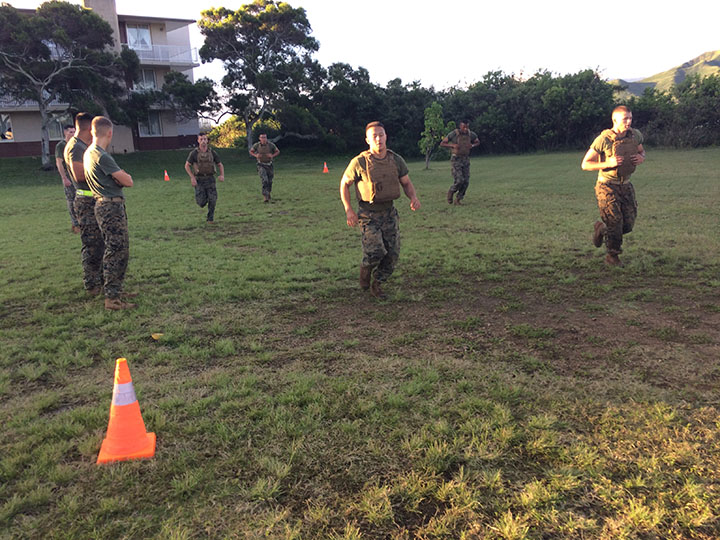
We recently re-published an article on fitness standards within the first responder community. Once again, we received lots of comments/feedback from the MTI Community which we wanted to share with you. If you too have thoughts, comments or questions on this matter, email us at coach@mtntactical.com.
Orginal Article → First Responders: Why Do You Tolerate Unfit Police and Firefighters?
COMMENTS
I just ran across your article on unfit firefighters/cops and I would like to commend you for speaking on this topic. As a career firefighter/paramedic, your article was well written and dead on. Frankly put, if you are a fat piece of shit in the station….I’d expect the same out of you on scene. This could turn into a lengthy discussion but I have seen our department go from having almost no structured exercise to most of our guys working out in some capacity in the last 5 years. It is great to see. I credit our Peer Fitness Program for this and also the senior men setting a good example for the junior guys. This means, getting up and doing something 25-30 minutes a shift between our high run volume. Run, do farmers carries, throw the sand bag on the floor above the bosses bedroom and piss him off, hit the heavy bag. Do something and sweat some. When you’re cutting someone out of a car with etools, pulling line, doing CPR, seaching a bedroom for a kid or anything else physical….you’re expected to be in working condition. Not cover model condition, working condition. I try each shift to get into the weight room and do what I’m preaching above, if I miss it I do something at home even if that’s chasing my wife around. That’s my responsibility to myself, my family and my coworkers. I may die at work but I’ll do whatever I can to make sure it isn’t because my heart exploded.
I believe it was the old country singer Porter Wagoner who had a song called, “The cold hard facts of life.” Amazing perspective on this topic. I am a police academy instructor. There are 6 full time staff and I am blessed to work with a great crew. However, we are deeply divided in the area of fitness. The 3 masters degree guys pretty much wont even walk through the gym much less work out. The other 3 of us “knuckle draggers” work out with the students with the lead PT instructor having a CrossFit instructor rating. We follow Cooper protocol for entry and exit recruit testing. I really feel a burden to set an example for the younger and older guys in training. I’m almost 52 and pretty stocky but can keep up with most of the kids. I wish there was a way to motivate them to get back in the gym. I have even had recruits ask why the other 3 don’t work out with them so obviously they are seeing it as an issue. I wish only the best for my brother instructors but would love any insight into a solution you can offer. I’m guessing their issue may be ego-based in part. Nobody likes to look bad in the gym or on the range. Another interesting aspect of our work is the number of 20-something’s who show up to the academy unable to do more than a couple of pushups or sit-ups. It’s a battle on all fronts!! Sorry for rambling but this struck a chord. Love your work, stay the course!
That drives me up the wall, how am i supposed to care for a patient when my partner is just as likely to fall over from an MI or lecture a patient about not being on top of their diabetes when my partner is 300+
Not to mention my major fear of them not being able to extract me from some place should i ever get injured
Especially given how large fitness culture is now this shouldn’t be a thing
Unfortunately sometimes you don’t have a choice but to tolerate them. If you tell them they’re unfit and need to do something about it they will file a harassment complaint. It’s more likely to cost you your job than to make them change.
My partner and I have been shut down by admin for adding basic PT and conditioning at the beginning of our department DT sessions…they said it was “unfair” and singled out “some” members
It’s such an officer safety issue!! You need to be fit and strong to stay safe and keep others safe!
Because they’re too busy worrying about cops with tattoos to be concerned about fitness.
Culture. The culture still accepts it. But I think tides are turning. If you look at the spread of causes for LODDs in firefighting it’s arguable that you should spend more time working out and less time doing RIT yet find me a Chief Officer with the fortitude to stand behind that statement. They’re few and far between. Sadly it’s getting harder and harder to ignore the facts.
It’s in the military too. Yes there are height and weight standards and PT tests but they’re a joke.
If you’re military, or first responders of any kind (police/fire/ems) you need to be a prime example of a human being. Best of the best and hold yourself to the highest standards. No exceptions.
I think it’s a cultural thing. You either have the drive to stay fit or you don’t. When I tore my Achilles, I got out of shape because I couldn’t run anymore… also got depressed a bit. It felt wrong to me, though, because I’ve always kept myself in shape. All it took for me was to glance in the mirror and see the number on the scale and I set my alarm for an hour earlier… I’m still doing PT for the Achilles, but I’m hitting a good 40 minutes of cardio every day. I’m still nowhere near where I want to be, but I’m never going to be as bad as I was.
My department has no standard. So you can’t discipline anyone for poor fitness. To change the policy requires the state legislation to change a law.. So…. We have no standard.
I am in charge of the fitness committee at my Job. We use to have the pack standard for our arduous testing for red cards annually. That has changed over the years due to injuries during the test. Cal Fire is not the only organization that does not have a standard. When I tried to implement a standard/change it gets very complicated due to employees rights and one of the biggest hurdles is ourselves and the Union standard/lack of standards.
In North America we have decided that everyone is to be tolerated at all times and no one’s feelings are ever to be hurt under any circumstances. Inclusion is more important than performance. Tell someone at work they are out of shape? The sky would fall. And then you’d be up to your eyeballs in harassment complaints, conflict resolution meetings and sensitivity training.
Not really excuses. If there is no standard or policy that says you HAVE to meet a fitness standard, you CAN’T fire someone. The agency, Union, and coppers/hose draggers have to get behind it and put it on PAPER. It can’t be some theoretical “you should be in good shape”. There has to be a standard!
True there has to be a standard, but on an even more basic level, why? Why would an individual sign up …no work hard to do one of these jobs only to fail because of preventable physical limitations. Police, fire and military are learning professions. Be a student of your profession mentality. Endeavor to excel physically
don’t see any mention of the effect of altered shift and sleep schedules, ptsd or cumulative stress which are all documented to have effect on the physical well being of first responders. This article seems to suggest that it’s simply a lack of motivation that leads to unfit members. If the organization is going to demand fitness it needs to provide opportunity ( gyms and time to use them) and it needs to account for stress and sleep issues and the hormonal effect they have on the human body.
I believe it was the old country singer Porter Wagoner who had a song called, “The cold hard facts of life.” Amazing perspective on this topic. I am a police academy instructor. There are 6 full time staff and I am blessed to work with a great crew. However, we are deeply divided in the area of fitness. The 3 masters degree guys pretty much wont even walk through the gym much less work out. The other 3 of us “knuckle draggers” work out with the students with the lead PT instructor having a CrossFit instructor rating. We follow Cooper protocol for entry and exit recruit testing. I really feel a burden to set an example for the younger and older guys in training. I’m almost 52 and pretty stocky but can keep up with most of the kids. I wish there was a way to motivate them to get back in the gym. I have even had recruits ask why the other 3 don’t work out with them so obviously they are seeing it as an issue. I wish only the best for my brother instructors but would love any insight into a solution you can offer. I’m guessing their issue may be ego-based in part. Nobody likes to look bad in the gym or on the range. Another interesting aspect of our work is the number of 20-something’s who show up to the academy unable to do more than a couple of pushups or sit-ups. It’s a battle on all fronts!! Sorry for rambling but this struck a chord. Love your work, stay the course!
I completely agree. The last small department I was on, I constantly pushed for fitness, and had to fight tooth and nail to even be able to work out from 8-5. I have always supported one pass/fail test, as well as helping firefighters make achievable goals to improve/maintain fitness. Unfortunately, it’s pretty difficult to effect change without bugles, and when fellows are much more comfortable not exercising. As the saying goes, if you can’t stand the heat, get out. These are not career fields where you get second chances. I completely respect the time a veteran FF/LE puts in, but if they don’t maintain physically and mentally, they are a liability and causing or risking harm to their “brothers and sisters” and to the public.
I read your article and some of the responses. I am deeply appreciative of
your no holds barred, truthful, research based, common frigging sense
stance. As a 46 year old female federal LEO, I know the challenges that
face “legacy” officers. Too. Bad. If you can’t, or won’t, do the job, then
simply don’t. Find one that does not require a certain level of fitness and
save tax payers money while likely saving your, or someone else’s, life in
the process.
Administration is often too worried about hurting feelings or being sued if
they cull those unwilling to do the work to be fit. That might change if
the public was made aware of the milieu of cost incurred (insurance,
training, man power, etc), not to mention the fact that an unfit officer is
much less likely to protect and serve the community they represent.
Keep doing what you are doing. Visiting your gym, lab, business is on my
bucket list!
Just got done reading your article. Loved it. Been living this problem my whole career. I came from Marine Recon. Now I am a K9 handler for our tactical section with the Albuquerque Police Department. My question is simple. What are the legal grounds in regards to enforcing a fitness safety standard for all cops at my department, and departments nation wide. I have long been told that “we can’t implement a standard for the whole department only certain units because of legal reason. Any help or direction u can point me in is greatly appreciated.
RESPONSE
Treating fitness as a safety issue is the paradigm shift I recommend. Currently fitness isn’t treated as a safety issue – hence, for the few departments who do have required, high jeopardy assessments, the standards are so low the fit officers don’t respect them … and this hurts the unit morale. Many departments don’t try to get an assessment – simply because of lawsuits which always follow from people who don’t pass and are punished with duty restrictions and/or job loss. I’d encourage you to do a google search on the recent efforts, and subsequent lawsuit, by the Colorado Springs PD to implement a high jeopardy fitness assessment.
Treating fitness as a safety standard, to my knowledge, hasn’t been tested in the courts.
I’ve written to you several times. Again I’ll open with thanking you for everything you do.
I read the article on unfit first responders as well as the reactions to them. I’m personally disgusted by the negative reaction to the article, and I imagine I know which camp the detractors come from. First of all, to summarize my opinion: a smart cop is good, but a smart and fit cop is much better.
As a veteran, I saw the importance of fitness overseas and how miserable an unfit person is outside the wire doing even menial tasks.
While day to day policing is less physical than the military, the days do come where we are taken to task. The last foot pursuit I was in was over a kilometer of mixed rural and urban terrain ending with a yard to yard canine search. The one before that was similarly enjoyable, with a chase into ravines and over fields and fences. Fitness played no small part in running the suspects down and ultimately arresting them.
Older members have a wealth of knowledge to pass on, and are by no means disposable. But the fact is unfit partners impact the safety of each other and the communities we serve. An older member might not score 100, not every officer needs to be in the running for SWAT, but a minimum expectation for someone wearing a uniform is not improper, and mitigates risk to all involved.
“It’s not about you”
I’m not a first responder, I’m a light infantry rifle company commander. This article and some of the weak responses to it strike a nerve with me because we go through the same thing at the company level, and it boils down to this. Everyone has an excuse. Period. Until you don’t allow excuses. You trim the fat, literally, by forcing adherence to standards….”oh this guys is a great field Soldier [insert first responder]” but he’s fat. Why is he fat? He eats like shit, he doesn’t work out, and at end state has proven that he lacks the discipline (discipline-not, in fact, related to age***) required of those in the warrior profession.I have learned over the last year that I don’t have the time or patience for it in my own organization and quite frankly as a taxpayer who expects first responders to help me or my wife out in a time of need, expect the same from them in theirs. Civil service isn’t a welfare program like so many treat it. You earn your keep or get out. Is that tough? Sure. Am I 29, still “limber and fit” etc. yea, but I also had bilateral groin surgery and was a graduate of ranger school 9 months later, not because I’m physically talented or gifted, on the contrary I’m clearly not, its because I give a shit, and I understand there are no exceptions in a line of work that isn’t fair, and that at its worst, will leave people dead.
As the saying goes “everyone wants to be a gangster until they have to do gangster shit.” Being fit, mentally tough, resilient, etc. goes along with the responsibility of carrying a gun, axe, radio, whatever you happen to carry. Guys will make excuses for days as to why they don’t have to do these things, because of some special gift they happen to have. It’s weak, its unacceptable, and the excuses about age, injury, etc. don’t cut it. When you can’t meet the standard, it’s time to leave, and I’m good with that because one day it will (we all have to get out, its the only guarantee) happen to me.
Sorry for the rant, but in short I appreciate what you guys do, I’ve followed you and atomic athlete dudes since 09ish and think this helps to move us in the right direction. I strongly disagree with (in both military and LEO communities) the rampant sense of entitlement that seems to pervade our organizations. Its “what can YOU do for the [insert organization])” not “what can the [insert organization] do for you.” When that reverses, its time to go, whether you get your pension or not stud.
Hi Rob…I have been receiving these articles since I attended your booth at NTOA in Salt Lake last September. I was happy to see the stance you have taken on fitness and first responders something I have a keen interest in with my organization. I have been a member of the Emergency Response Team (ERT) for 16 years and the Team Leader for the past 5 years. Fitness is a way of life for the guys I supervise and through my connections (my brother who attended the Western University and has a degree in phys-ed and sports physiology and his wife who is a sports medicine physician ) we changed our fitness test for ERT over 10 years ago. Prior to 2002 the test was pushups, sit and reach (flexibility), crunches and 1.5 mile run…it didn’t test anything we really did on ERT and was scaled for age. We then moved to a Task Specific Fitness Test (TSFT) with a non-gender non-age (it is the same for everyone) cut off of 35 mins. You have to wear a 40 lb vest and carry a “blue gun” (plastic) and the course replicates a K9 backup track which is our toughest physical challenge on our job. The size of the course is roughly the size of a basketball court and you complete 6 laps and do a task….the tasks are a 4 ft wall, duck walk for a lap, tactical bound the length of the course and back, belly crawl the length of the gym, 200 lb dummy drag and finally simulating arresting an individual you do 10kicks, 10 knees, 10 elbows, 10 open hand strikes and 10 baton strikes on a “Bob” mannequin. So you do 6 laps followed by a task then 6 laps a task…etc.… It is closely monitored by our peers who are certified fitness appraisers and blood pressure is taken before and after the test…
I am 48 years old and take great pleasure in beating the guys who are in their late 20’s and early 30’s on our team…it gives bragging rights for the year and motivates everyone to keep their fitness level up. Operationally I can’t be a liability to my members and a recent k9 track in March was a good example…there was snow on the ground and we were tracking several males who had just committed a break in and were armed…the track lasted over an hour and thanks to my Fitbit, I know my heart rate hit a max of 172 bpm and was an average of 130-140 for the entire track…we made the arrest and later found two loaded handguns when we completed an evidence search that the bad guys had dumped. I can’t be that guy who falls out on a track and becomes a liability to the other members of my team and a danger to them as well. I agree the older guys need to be able to perform as well as the younger guys. You have to work a bit harder to keep the level up, but it can be done.
Not only is it important for your own well-being, public image is important as well. Several years ago we had to escort a violent prisoner who we were taking from some out of shape, quite dishevelled prison guards at a court proceeding…he looked my partner and I up and down and then looked at the other guards and said to us “I guess I had my chance to get away, you guys have your shit together and are in shape”!! We always have clean polished uniforms and he obviously noticed our guts weren’t poking out from under our vests…bad guys notice too!!
First and foremost I do appreciate the article that you presented on this topic. I’ve been in law enforcement for fifteen years and my father retired after thirty six years of service. I strongly support fitness and though I will be thirty nine in a month, I’m still in better shape that young men half my age. Sure the job takes its toll on policeman and sure there are limited budgets, however the real talk is there aren’t many quality candidates anymore. Selections I’m seeing made today would not have even made it through the door ten years ago. I can sum up all the long winded theories and suspicions of why this is happening. There is a new generation that is not like the old days when compensation was not a real factor. Back when the public could easily say “it’s not about the pay you should want to do this”. Well Rob a great deal of that is over and for the new generation it’s about compensation and recognition. They have to have both or they are gone. Now compile that with the fact that the newer generation is also not very motivated for fitness. When we give entry level PT test for hiring, the thirty five and up candidates dominate the twenty one to thirty candidates. It’s not uncommon to see a young male in his twenties struggle to do ten push ups. Sadly this will continue to decline until the public professions are allowed to be honorable again by the media as well as agencies refusing to cut training budgets first such as fitness.
Great article on a topic that really affects the public-at-large. As a member of the Armed Forces and a 40+ year-old individual, I find that fitness is key to both being able to conduct my duties as well set an example for junior military members. Having spent most of my military career in the southern U.S., I am often disturbed and angered at seeing numerous public servants in the fire department, police department, and sheriff’s offices that are extremely overweight. Couple that with reality TV shows that document law enforcement duties being conducted by corpulent officers is setting a bad example to the public at large. It has made me develop a mindset that if something bad was to happen, such as a car accident, fire, etc., that I can expect that it would be upon myself to survive the situation, because a fat, out-of-shape officer of the law will be unable to assist me, my family, or neighbors. It’s a scary feeling, yet a reality.
Another observation is that people are extremely sensitive to criticism these days, and when one is told he’s fat, out of shape, lazy, etc., it’s taken as an immediate personal attack, and as mentioned in your article, union issues arise, the work environment becomes hostile, and it develops into a bad situation for all involved and affected.
Most citizens of the U.S. pay taxes to ensure that their public servants are able to do their job, and most times that means more than being able to fly a desk. I think it’s a travesty that it has become acceptable to see public servants, both civil and military, not be fit to do their jobs. Unfortunately, it is a grave reality.
I can honestly say that for me, fitness is a key portion of my job and I have a responsibility to the people of this country to be able to perform my duties. I have incorporated it into my lifestyle, and use it to set an example for my family, subordinates, and peers alike. Though I cannot force people into making it a lifestyle choice, I can definitely show them the benefits and emphasize the necessity of being “fit to fight”. I think you’re spot on in your article, and it’s clearly necessary that feathers need to be ruffled and some individuals need to offended by your article, but they also need to realize that they belong to an organization that is bigger than them. If they wish to be fat, that’s fine, it’s a personal choice, but find a career where your lack of fitness won’t risk the lives of others. Great job man. Keep up the good work, and thanks for publishing such an article.
First of all let me say thank you to SSD for continually looking to help the tactical athlete community evolve in its fitness standards, abilities, and maintenance/durability. I had the pleasure of meeting a couple of your people at the NTOA conference last year in Salt Lake City. I am a 16 year service police officer in Canada. I have been involved for the last 8 years as either a part time or (currently) full time Emergency Response Team member (Think SWAT or FBI HRT in the USA).
Organizationally general duty/patrol cops are only allowed 30 minutes per week of on duty exercise time according to our policies, I’ll let that sink in for a moment. Exercise facilities with units/detachments run the gamut of none, to what should be considered none, to decent. These units can also be located in major urban areas or hundreds of miles North of the Arctic Circle. There is no policy on a minimum fitness facility for detachments, it is left up to the bosses discretion. Seeing as the boss gets kudos for coming under budget most do not spend hundreds of dollars on fitness, let alone the thousands that is needed for a good facility. A contributing factor to lack of fitness organizationally is that we have too few cops for the amount of work to be done. Even if bosses allowed more than the 30 min/week of exercise time on duty there very well may not be the time to get it done. A running joke is that our organizations motto is: more with less. We still have some bosses that expect their members to work a certain number of volunteer overtime hours per week/month or they might not get sent on that course they want or get vacation when they want.
As for ERT we are lucky, when full-time, as the rule in my area is we get 60 min of on duty time/shift to exercise given the higher fitness standards for our unit. This is not in policy but rather is again left up to the boss. Even 60 min is pretty skimpy for the fitness we should have/need. The part time guys have it worse as they work in these places where their bosses do not allow on duty exercise time and have to fit it in between working 10-12 hours or more/day and family commitments. With ERT generally the older guys, like myself, are in leadership positions but these are still what the military would consider at the tip of the spear. We do not have the same organizational structure to allow for older tactical athletes to be in the rear with the gear so to speak. There are limited higher rank positions within ERT and organizationally it is a career limiting move to spend any appreciable amount of time in the unit. We are like ex combat experience soldiers going into the private workforce, we don’t have the certain skills considered to be desirable. There is no mechanism to retain injured/older individuals with a wealth of tactical experience and knowledge. As ERT we have to be able to recognize when we are becoming “that guy” and leave the unit. I personally have had 3 on duty injuries which have led to 3 knee surgeries, staying in shape for the job is a daily struggle. I am also not a naturally fit/lean guy making this a harder prospect. I’d be a lot like Larry Vickers if I didn’t work very hard at maintaining my fitness and weight.
I believe that nutrition, or lack thereof, is one of the major contributing factors to our unfit cops. As we all know you cannot out train a bad diet. Stress, lack of sleep, long work hours, etc all contribute to a bad diet and even over eating when eating a good diet. Either way eating too much equals fat, unless your that lucky person that can eat whatever they want and not gain weight.
I do not think that you have to be in top physical condition to be a cop for certain jobs. However, if you job puts you in a position where you may get into a fight on the street, have to run after a suspect, or deal with a critical stress incident then cops owe it to themselves to be in shape. I recently attended a de-briefing about a major incident investigated by a major law enforcement organization in the USA. Due to long work hours and the stress of the situation and investigation they had their less that fit members going down sick and in some instances with heart attacks and other health complications. We have to be the masters of our own lives and I do not know of one cop that doesn’t want to retire healthy and happy. Organizationally if one of us dies on duty there will be a lot of pomp and circumstance in the media by the organization but after that your family will get a crisply folded flag and you will be forgotten by the organization. They’ll grab another orange out of the fridge and start squeezing it until all the juice is gone, then they’ll throw that orange away and grab another. Repeat. That may sound harsh but it is the case, if you think the organization will grind to a halt at the loss of your life your just being delusional.
I do not think that your article meant to put forth the idea that fat cops/firefighters are lazy at all. But your assertion that they shouldn’t be at the tip of the spear is very correct. If you are at the tip of the spear and out of shape you are a liability to the safety of yourself and everyone you work with/protect. I think the hard part is defining what is in shape for your specific job/role. For example some think that if you cannot run a 6 min mile for multiple miles you are out of shape. Last time I checked I never ran more than half a mile on any ERT call. Now that doesn’t mean we should only train to a min standard but there has to be an upper limit that is expected, especially considering some body types are more suited to endurance and some more to power, etc. I do see a lot of younger in shape cops bad mouthing older less than fit cops. Unfortunately they do not realize one day they too will be old and possibly not in such great shape. I think the idea here has to be balance.
In this day and age of social justice warriors and people that think words hurt more than hand grenades this is not a welcome idea. Society has become soft and weak I believe due to our years of prosperity. Some have to remember or learn the old adage of “sticks and stones may break my bones but words will never hurt me”. The political correctness of our current society is sickening. Additionally we are allowing the minority in society dictate policies and how others should act instead of what is best for the society as a whole. At the end of the day if a person is too unfit for their current job/role they should be told so, given an acceptable time frame to rectify it and supported organizationally, and then allowed to continue with that job/role once fit enough. If they do not achieve that minimum fitness level then they should be removed from that job/role for the sake of their colleagues and publics safety. Sometimes the truth hurts, that doesn’t mean it should not be said. Feelings may get hurt but that is nothing to lives lost or lifelong injuries.
I would like to close by saying that there is an inherent responsibility on the organization to set standards and have policies in place to prioritize fitness, to promote a culture of fitness. There is also no less of a responsibility upon the individual to set their own standards and maintain then. When the time comes that they can no longer or do not have the desire to maintain them then they need to look for another unit/job that does not require the same fitness demands.
Rob/SSD staff please continue to do the work you do. I would like to see you become more mainstream up here in Canada and maybe even put on some courses/workshops here in Alberta. If you ever get the desire to do so please let me know and I’ll be one of the first to sign up.
Take care and stay safe.
Thanks so much for contributing and great points all.
I believe the individual’s responsibility to the professionalism and safety of his or her unit extends beyond the self, to that unit’s professional culture …. regardless of command support or organizational policies.
We understand that for many first responder units, command support and policy changes are not in place and will be a long time coming …. if they ever get there.
So in our courses we instruct Unit Fitness Leaders to embrace this reality and start building the fitness culture from the bottom up. Don’t quietly accept the current state of affairs, speak the truth about fitness and safety, but don’t be righteous about it. Speak as much with action as words.
We urge UFL’s to carve out space, be super resourceful with equipment, and train at the duty station where others can see and join in. Demand those who join in work hard and commit, but not set a fitness minimum to start and always be welcoming. Don’t make training part of some elite club.
We teach them how to program, instruct how to work around limited equipment, scale for injuries and fitness, be resourceful and make it work.
As well, command designation is not required to be a “Unit Fitness Leader” at any department. Many, many first responders do this now on their own dime and time.
Politics and political correctness aside, they simply understand it’s the right thing to do.
We’d love to come to Canada and over the years I’ve worked with and answered questions from hundreds of individual Canadian military members and first responders. We just need a facility or a unit to host us.
Contact me if interested!
– Rob
Had to contribute to the discussion when I saw the military’s age-based PFT scoring system brought up in defense of maintaining the status quo. It’s true that the scale adjust based off age, but the difference (a few reps on bodyweight exercises and seconds on the run) between age groups is insignificant when you’re talking about performance on the battlefield. Older soldiers are not allowed to be more unfit then their younger counterparts, because the mission is the same. Many people, myself included, find that getting older doesn’t mean the PFTs get any easier.
One of the commenters mentioned that it’s basically impossible to “keep up with the twenty-somethings”…but that is exactly what it is all about. On my first day in front of my platoon, I called out the fastest kid they had and we went on a run. We were pretty evenly matched, but I ended up smoking him by the end. I was 23 and he was 18. On the first day in front of my company, I called out the fastest kid and we went on a run. I was now 30, but that kid was still 18. He beat me, but not by much. Now I’m closing in on 40, that kid is still 18, and he pushes me to be stronger and faster every day. I might not win every time, but it’s about showing your unit that you are dedicated to being fit…and that you won’t be a liability on the battlefield. It’s hard to keep up with the twenty-somethings. It’s damn near impossible if you have been doing it your entire career…that’s the whole point. You have to be doing it your entire career.
Don’t use the military’s age-based scoring as an excuse for maintaining an unfit status quo. PFT scores are a very, very small part of the culture that ensures we lead by example in all things, including physical fitness. When you relax the standard because not everyone needs to be fit due to their “place on the scene”, you stop leading by example. We’re not talking about a few reps or seconds on a run, we’re talking about people who are completely unfit or obese…and that only happens because the culture allows it.
Thanks for the training info and other good stuff. But I seriously take issue with your references to “Legacy” officers.
I agree with improving fitness and other training of our officers. Maybe I’m a late bloomer too. Ran my first marathon at 43, the Goofy at Disney at 44, made SWAT at 46. At almost 51 after two knee surgeries in the last three years, a shoulder surgery this year and nagging arthritis, I can surpass a number of the millennial officers we have, actually most of them.I’m limited now to PT for the shoulder, one arm KB swings, box jumps, singles, and a variety of core and leg exercises. I’ll be back in the box next month! I consider myself a work in progress, still recovering from the last injury and will always be able to improve and learn.
I’m not only proud of my civilian profession, I’m a member of the Florida National Guard and on jump status there as well. And extremely proud and committed to my unit.
Our agency is working on our fitness, the chief instituted a Cooper plan this year and I’ve seen a greater number of officers training. Maybe not “the way, but a way”.
There is a valid discussion about younger officers. Until we can get a retirement that is much shorter than 25-30 years in many states, you’ll just have to accept us.
We’re out here Rob, old farts who not only refuse to quit but do what it takes to remain effective!
RESPONSE
I didn’t invent the term “legacy” – I learned that from pissed off first responders of all ages in reference to older first responders who get to a certain point in their careers, let their fitness go and either blame their age or justify it by arguing they’ve somehow earned the right to not be physically ready for the deadly and dangerous environment they work in.
Any unfit first responder is an unacceptable safety hazard. And the silent acceptance becomes quiet approval by the command and others. This builds resentment amongst first responders who are professional about their fitness and this resentment poisons unit cohesion and morale.
You know the guys I’m talking about, and as a fit “legacy” guy yourself who has to work so hard now at 51 to maintain your fitness like the professional athlete you are …. well – I would hope you would be the most upset as you are living proof that it can be done.
– Rob
Fantastic article. I hope that safety in fitness becomes standard someday.
I have been mil/leo for over 20yrs. You are spot on and I have said the same thing for over two decades. I noticed that some responses run the gamut of using the brain, being big, blah, blah, blah. I have heard the I will use my gun more than I can count. I love how they seem to know the when, where, how many, environment, etc of a deadly force encounter. They seem to be clairvoyant. And then you gotta love how they take something(your article) and try to turn it into something else. I have been fortunate to talk to many (100’s) that have been in life and death struggles. One question I always asked, what would you do differently? Every single one said they wished they had been better conditioned, stronger, combatives, etc. Not a single one has ever said they wished they had been less conditioned. I have always thought that standards are abysmal and pretty much laughable. These public service jobs that involve life and death matters should be tied to physical fitness standards in order to keep your job. PERIOD. And it should be something you have to work at to keep. There should be no second chances. You fail you are out, end of story. Then I see all the BS about they only give me X amount of time to workout. Bullshit. I have worked out in the mountains, desert, hotel rooms all over the world. This includes 40, 50, 60+ hour work weeks. Maybe I had a flight of 20 hours or more, living in a sleeping bag for 30+days, going from country to country, no sleep, no food, didn’t matter, I still worked out when my training plan called to workout. I care not what one of these self pitying, whining, whimpering, you know what thinks. I have always known that my fitness has saved me from many bad situations that could have went the other way. They can keep up the undisciplined pity party-all I can say is they better hope their number isn’t called upon to respond to save themselves or a teammate. Great Article and as always Rob love your stuff.
I read the article in question, and I strongly disagree….. It was written in a cruel fashion, and is totally untrue…. There are many, and I say MANY good officers and firefighters that in today’s profile would be considered morbidly obese, and do their job at a high level of efficiency… I’m offended and ticked after reading this article. The focus should be on their efficiency and ability not on size and perception.
I’m a firefighter. 15 years on. I agree with most of your views. I was hoping you had more on how to introduce the safety issue. I rarely hold my thoughts in when asked and you are right silence equals acceptance. The chiefs do nothing and do not back the officers so again nothing is done. You are correct again. How watching an unfit ff and officer struggle hurts us all. Not sure on a solution well one that doesn’t come across as screwing another ff out of a job. I know. It’s not safe for us all but a touchy subject. Tell the truth and risk becoming shunned or suffer in silence/acceptance
RESPONSE
I don’t have a quick answer for you. Best for us is to continue to look for cases where the lack of fitness has been an issue in a first responder’s injury or that of others. These cases, and perhaps lawsuits that have resulted, will highlight the issue – although it’s obvious already.
No one is owed a job – especially a public service job. You should be angry at the unfit firefighters on your department who put you in this position. It is entirely within their control to get fit and solve the problem.
– Rob
You folks have hit a nerve amongst my audience, kudos! From a seasoned firefighter, [this is the] most accurate article I have seen on true attitudes of those who are fit towards those who aren’t. Silence Acceptance = Quiet Approval. Best statement ever.
So basically you’re saying, fat people are all lazy, and don’t deserve to be in certain lines of work? Well you sir are a fucking asshole.
I found your article interesting. I am a 44 YO FF in a smaller rural dept. I am also the health and wellness coordinator for our dept. We adopted the Air Force Fit for Duty standards a few years ago. It is age and gender specific. Our program is punitive with a remediation process if a member falls below a minimum standard. Unfortunately, we do not have slower stations or jobs that members can assume if they are not fit, but pass our standards. We have run up against some unique situations. I have repeatedly discussed with our committee and management that our fitness requirements begins with our hiring of individuals that will not become liabilities in the future and second, more importantly, is adopting and embracing a culture of fitness. A problem we are finding is our seasoned members are having ortho injuries, knee replacements, hip replacements etc., but are still capable of performing their expected duties. I have found that we need to protect the employees from themselves during our fitness testing. They will damage themselves in order to complete the tests at 100%. Also, the individuals are a wealth of knowledge. We are unable to shift them into command positions as we just don’t have those positions available. I don’t feel it is fair to just cast these members away after a career of faithful service. These injuries are a result of their service. These members scores fall into the same category of someone who is not fit and does not take fit for duty serious. We are attempting to navigate this situation, but I notice a similar attitude from some committee members that I sensed from you in your article. An attitude of removal from service. It is a rigid stance that needs to be defined to the lazy employee. This rigid stance does not allow a separation between the good employee and the lazy employee and I cannot get this fact recognized. Unfortunately, as I said before, good employees are falling into this situation. I firmly believe in performance standards and myself have already had knee surgery and expect another in the future. I stay in top physical condition and can outperform the majority of our membership. I am also a cert. personal trainer, only for our membership. Also, members with ortho injuries scores are not reflecting their true fitness levels, but are being interpreted by other members as being unfit due to a percentage score. An example being a timed run. I am short and muscular with a knee that at the present time tolerates running. Yet I run an average of seven miles on each of my four days off, two 5k every other day. My scores fall average in the scale, but I can on average perform between eighty to ninety push ups in a minute, yet our scoring system is weighted heavily in the run with a low weighted score for strength. My scores are routinely lower than younger members whom I outperform on all incidents and fitness training. They get great scores for running fast yet do the minimum strength component and get the same maximum points even though they are unable to handle a chainsaw all day or throw a ladder. Is my safety at risk from the weak employee without the strength to drag me to safety but he scores great within our standards due to his skinny frame blazing around the track? Remember my dept. doesn’t have the luxury of unlimited available resources. IRIT is common practice, leaving two members to perform interior fire suppression. I am interested in your thoughts as you may have already heard this situation already. Thank you for your time.
RESPONSE
I certainly understand the potential knowledge loss from legacy members who due to age or past injuries can’t meet the physical safety standard.
Your department is not alone with this issue. The military faces it with members injured – amputees, etc., but who want to return to combat duty. If I understand right, these members must still pass the same fitness gates as uninjured members – there are no allowances. Those who can’t meet the standards aren’t allowed to return to full combat duty.
Airlines have a mandatory retirement age of 65 for pilots. This age is mandatory, regardless of the pilot’s fitness, competency, etc. As you can imagine, there are a lot of super experienced, excellent pilots mandatorily retired at 65.
These are tricky issues, especially at a small rural department where everyone is family. There is no comfortable answer.
But unfit members, or those unable to pass the fitness safety standard for whatever reason, are an unacceptable safety risk. Unacceptable.
In a perfect world, the most professional of the legacy members who find themselves in this situation would step down. They would never risk the safety of their fellow firefighters.
But it’s not a perfect world.
First step is to establish a realistic fitness safety standard – a better assessment than perhaps the one you describe – which genuinely reflects the most dangerous demands of a structural fire. I believe our assessment is a step in the right direction. Regardless, the assessment should be conducted semi-annually. A semi-annual assessment doesn’t give guys enough time to let their fitness completely go between assessments.
Second, in addition to a shorts and t-shirt fitness safety assessment, I recommend a practical fitness and skills safety assessment in full turnout gear and under air. This assessment too, should be conducted semi-annually.
This practical assessment is actually an equalizer for legacy members who’s pure fitness assessment score may decline with age, but practical competency improve.
Safety aside, know that the legacy members in your department, who’s physical competency for the job is in question because of ortho injuries or whatever, are hurting the unit’s cohesion and morale.
Considering your fitness assessment, believe me I understand the “validity” of the Cooper Test from a scientific and legal perspective. But it struggles to meet the common sense test. Turnout gear is heavy, and functional movement in this gear takes a level of “tactical chassis” strength not assessed by the Cooper Test.
I’m no attorney, but of the case law I have read there has never been a clear link between a fitness assessment and a safety standard. Perhaps making this link will give departments the legal cover to create assessments which align with the job.
– Rob
Really enjoyed reading your article on fitness in the first responder. You make a lot of great points. I just turned 40 and have been working as a firefighter for almost 10 years now and i have seen what you talk about first hand. Talking about the legacy employees. What should we do with them? I mean these people have been working hard and most close to retirement age. In my state they are trying to pass retirement age increases. I also see this as a safety issue but hard to fire someone who has worked hard and almost ready to retire but unable to do to political pressure.
Thank you. Great article.
RESPONSE
A persons’ right to remain on at the department doesn’t outweigh safety – regardless of his/her previous contributions to the department or years of service. The fire simply doesn’t care. A safety standard is a safety standard.
Legacy members know this more than anyone and I’m disappointed that so many legacy members put their fellow firefighters, like you, in this uncomfortable position. It’s not about them. It never has been.
I often receive questions from military amputees striving to get back to combat duty. Regardless of their injury and obvious service to the military and country, if they want to get back to their old unit, they have to perform at certain level. There are no allowances given. Same should be true for first responders.
It is entirely possible for a older firefighter to be fit for the job. Is it harder? Yes. But it’s possible. Many work hard to stay strong and fit and not be a liability or safety hazard to their fellow first responders.
Again, I’m disappointed so many legacy members put the others on the force in this position. It’s a tragic leadership failure that needs to be directly confronted and called out for what it is.
– Rob
COMMENT
I recently read your article on FB. I am a person who had to retire early from the fire service. Not because I am unfit but because of jack ass people that believe they are fit. In other words people that some how become experts on the art of firefighting. There is no such a person. You learn knew things every day. Not sure who made you the deciding end all be all of fitness…. But your stories are vague and have been told many times. I will tell you this. One of the people I worked with, one you would consider to be unfit, was by far and away and still is the best engineer in the department. Keep your fitness rules to yourself. No one else care.
To reinforce your point, experience and tactical knowledge will not carry the day in crisis situations. You must have both fitness and tactical knowledge to win in the extremes. The problem is a lot of these legacy clowns get by at room & contents fires. When they get into a true shit storm they will fold. I don’t want these duds working for me. If other Chief’s had the guts to stand up and say this the problem would start to go away.
I don’t know where you are in your career, but the subject has come up frequently lately in just about every class I attend. As a 35 year vet in mid 50s I can attest that there is no way that I can keep up with the twenty somethings. As you stated in large departments they have the ability to put some of the out of shapers at the “rest home” The real issue seems to be with small departments where even being in command still puts us in the fire.
I wish I had an answer but even in my military career they had different standards based on age and there were very few 50 year olds around. Do we mandate that all departments staff so that minimum personnel to run a fire seen be on duty at all times thus leaving enough room for the older persons to be in command positions just like the military. Who can afford that. Do we do like the military and target that only 25 to 30 percent of those who enter the career will stay while the remaining 70 to 75 percent are dismissed after 4 years. A great many of young persons who have invested much will be upset. Do we can all the old guys who can’t keep up with the 20 somethings. You too will be that old guy and what will you do in your late 40s after getting canned. Knowing that what kind of person would enter the career.
If we are going to hang are hat on “This is strictly a young persons game” than be prepared to pay. That is expensive. Just look at what it cost to run our military. I wish I had better answers to give you. And yes as always I will admit that there are those who are out of shape and they can do better. A recent class of basic firefighters that I taught were commenting on a female in one of the videos who appeared to be pregnant and why was she on the scene. Which then led into the mantra of all the old guys who can’t keep up with the young guys should be canned. My response was to close their books and the final would be administered to all including myself. Those who can not pass will not continue on in this career, There were certainly cries of how unfair that was because I had such an advantage. Should they not be able to keep up with me? The answer is we all have a place on the scene. I must be with them and use my experience to keep them out of trouble. I have an obligation to pass on that experience just as it was passed on to me. The young firefighters have an obligation to learn from me just as I learned from my elders. And yes, I did it while doing all the grunt work because I was younger and in better shape than the 60 something who was teaching me. What I see in my small world is that the new persons entering into this career are doing so with college education. I think that is great, but unfortunately it also seems to come with the attitude that they have a piece of paper and know it all. There is nothing I can teach them or so they think.
That is an issue along with this one that we should be hitting head on.
Thanks for your writing on this subject.
You probably don’t know anything about cops from reading your article on deconditioned police and fire. I do agree fitness should be incentivized. Fat cops are a poor reflection. But let me use this example. The gun guru that shoot 100%, had a closet full of guns, lives and breathes firearms ,,, usually are the worst cops. The muscle they had to be the fittest ,,, the brain. Case law, attorney general guidelines, policies and procedure,,,, the washed up football player doesn’t cut it anymore. It’s brains first in 2016. That’s said our department give us 10 vacation hours for a voluntary fitness test and let’s us get a comprehensive physical while working. Just my 2 cents. I get the spirit of your article. But fitness does not equal good cop.
You Might Also Like Firefighter Fitness: I have not created this problem, but I’m not fixing it either
Subscribe to MTI's Newsletter - BETA

